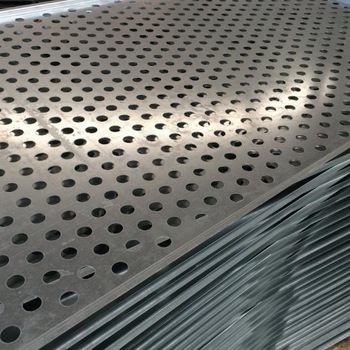Use of Perforated and fabricated sheet metals in Singapore
Sheet metal fabrication makes metal structures smooth by cutting, bending, welding, forming, machining, and putting them together. It makes machines, parts, and structures out of metals like copper, stainless steel sheet, aluminium, cast iron, alloy steel, hardened steel, etc. The sheet metal engineering team works closely with customers to ensure they are happy with the product quality. Some typical end products are loose parts, structural frames for buildings and heavy equipment, stairs, and hand railings.
Perforated Metal:
One of the most valuable and popular metal products today is metal with holes. Perforated metal can be thin or thick and can be made of any material, like perforated carbon steel. Perforated metal is versatile because it can have both small and large holes that look good. This makes metal perforated sheets ideal for much architectural work. The manufacturer's perforated metal filters out solids and diffuses light, air, and sound. It is also vital for how light it is.
Use of perforated metals:

Eco-Friendly:
Perforated metal sheets are better than other building materials because they are better for the environment. You can easily make your building more eco-friendly by using materials that don't significantly affect the environment. This is especially true if you use steel or aluminum, which can be recycled repeatedly.
Durable:
Perforated sheet metals are made from steel, aluminum, or any other alloy you can think of. This makes them a strong building material that is hard to damage. Sheet metals can be added to a building and last up to 50 years, even with little maintenance and repair.
Lightweight:
Perforated sheet metals are lighter than solid shapes and designs because they are made of holes instead of solid bodies. If you know this, you can use these materials to reduce the weight of a building significantly without affecting its structural integrity.
Pipe fitting is good because:
For many different industries, pipelines keep things moving. What happens when channels can't get things where they need to go? For many resources to move from one place to another, it would take a line of 750 tanker trucks that loaded and drove every two minutes, 24 hours a day, 365 days a year, to move even the tiny amount that one pipeline can carry.
Fit in all areas:
Pipelines often have to go through tight spots. Traditional flange fittings are easy to put together in close areas where you can't use a wrench. They are easy to put together with moderate torque, making it easier to fit them into tight spaces.
Cheap maintenance:
Flanges make it much easier to maintain a connection. This is especially true for straight lines in metal tubes and pipes. Flanges also make it easy to disconnect and reconnect connections and allow for zero-clearance assembly, making it easier to keep manifold, TV, and hose connections in good shape.
Conclusion:
Using traditional hydraulic fittings, pipe fitting Singapore is easily broken due to vibrations, high pressure, or shock pressures. On the other hand, flange connections are a good choice for pipe ends and bend. Without flanges, high lateral forces on a bend in a pipeline could cause the assembly to come apart.